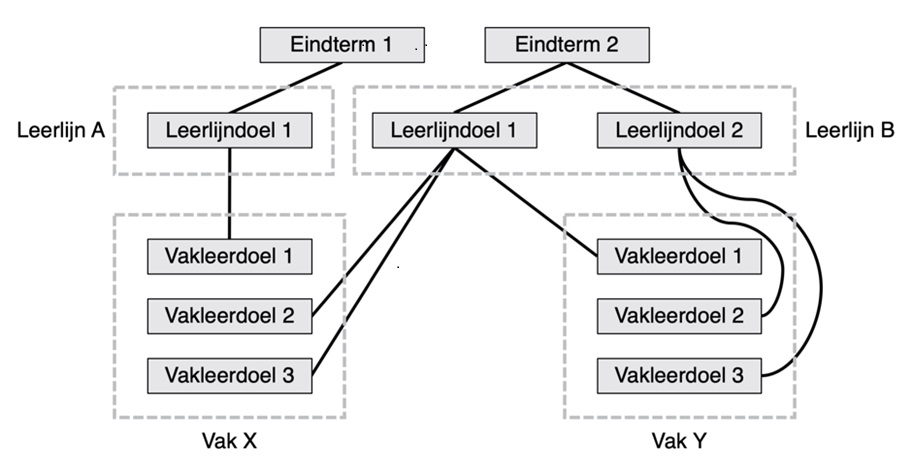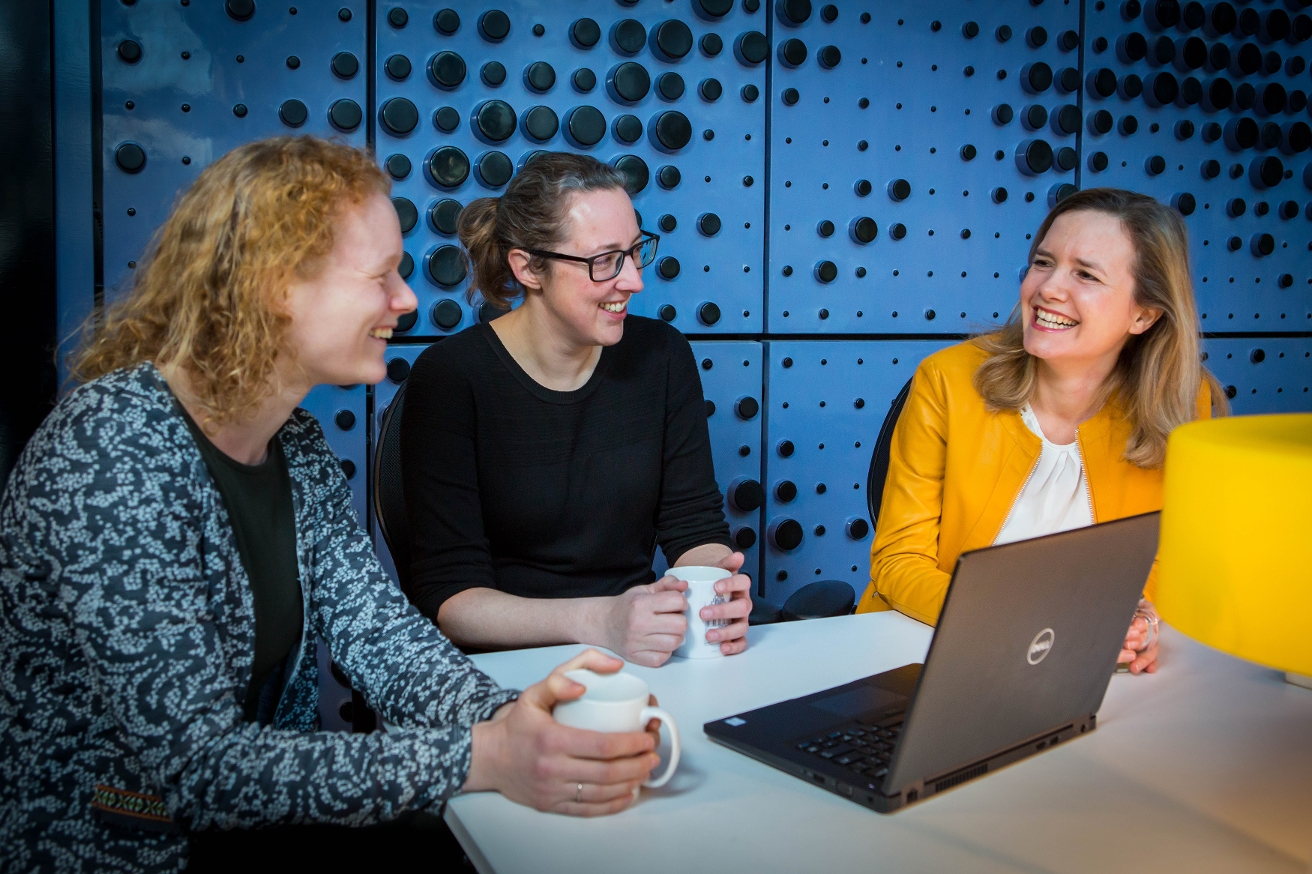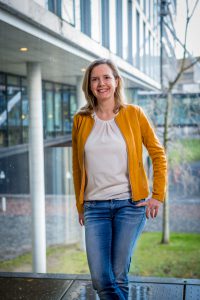Visible Learning Trajectories Program: improves structure and coherence of a curriculum

The power of cooperating teacher teams in curriculum alignment
With the Visible Learning Trajectories Programme (ZLP), UvA programmes tackle the (continued) development of a curriculum in an innovative and effective way. ZLP analyses and optimises the structure and coherence of a curriculum through a curricular methodology developed specifically for this purpose. This methodology consists of five meetings in which teacher teams, guided by experts, work towards an optimal alignment of objectives at different levels: from courses to learning trajectories to exit qualifications.
The end result of the process is an aligned curriculum that is supported within your programme. But also a smart online visual overview of the structure and coherence of the programme and a more professional teaching team.
Read more about the set-up of the programme at the drop-down menu at the bottom of the page or check out experiences of participating programmes.
Up-to-date and futureproof with the Learning Trajectories Methodology
For quality education, several elements are important:
Coherence in a curriculum seems obvious. Yet aligning learning objectives at the curriculum level is not always easy. Teachers’ expertise often focuses primarily on course content and less, if at all, on curriculum. And sometimes there is simply a lack of time.
The curriculum methodology provides:
|

 |
Tangible resultThe result of the programme is improved educational quality for students through:
|
Visible Learning Trajectories tool: insight for everyone
The Visible Learning Trajectories tool makes coherence and structure of objectives from the learning trajectories methodology visible. This online tool visualises what is covered when during the curriculum and at which level. Intended learning outcomes, learning trajectory objectives and exit qualifications are connected.
This provides students and teachers insight into the structure and cohesion of knowledge, skills and attitudes during the programme. For students, this insight is important for self-management, motivation and study success. In addition, the programme can use the tool as a communication tool between teachers and students and between teachers themselves.
|
|
Programme directors Sandra Cornelisse and Ilja Boor:
Sandra: “Students often have difficulty linking study material from a particular course to study material they have learned in a previous course. They see courses as separate elements that they always enter ‘blank’. In addition, students sometimes indicate that they experience certain material as repetition, without realizing that it is actually a deepening of previously covered material. So they do not recognize that they are going into a deeper level during the new course. A visual overview of the learning trajectories and related learning material helps students. It motivates and gives meaning.”
Ilja: “Of course, it also helps programmes. What makes this methodology unique is that teacher teams, under the guidance of experts, work towards an aligned and supported curriculum. We get feedback that the programme strengthens cooperation and commitment within teacher teams. It contributes to professionalisation because the ability to think at the curriculum level is enhanced.” |
Guidance by experts
| For each programme, the programme is supervised by two trainers with educational and didactic expertise and experience with the methodology. They guide the process and provide feedback during and between meetings. And they consult with the programme director on the progress and outcomes of the programme. |
The team
|

Want to know more about ZLP?
Check out the information below if you would like to know more about the programme. Would you like to participate as a UvA programme? Please send us an email. We would like to get in touch with you.
Do you want to become a trainer within the Visible Learning Trajectories Programme? Have a look at the position.
About the programme
The Visible Learning Trajectories Programme (ZLP) was started in 2017 by Ilja Boor and Sandra Cornelisse. They developed the learning trajectory methodology specifically for this programme. Between 2017 and 2022, almost all Bachelor programmes within the Science faculty successfully completed the programme. Since 2022, the programme has been offered UvA-wide. By mid-2023, 10 Bachelors and 3 Masters had already completed the programme and 22 Bachelors and 15 Masters are running.
For an existing curriculum, the programme lead time is six months. When developing a new curriculum, the programme runs in parallel with the development. Implementation of the Visible Learning Trajectories Programme at a programme always begins with a kick-off meeting with the programme director.
Het gehele programma bestaat uit:
| Start interview | Interview with programme director and assemble core team with learning trajectory coordinators. |
| Five learning trajectories meetings | In these meetings we determine which learning trajectories a curriculum consists of and formulate objectives at the learning trajectory level. We visualise, analyse and optimise the coherence and structure of all objectives by determining which curricular objectivesand exit qualifications belong to which learning trajectory. And how the intended learning trajectory objectives are achieved. |
| Teachers & coordinators meetings for each learning trajectory | In these meetings, the core team members discuss the outcomes with course teachers and course coordinators within a curriculum. In this way, all teachers in the programme are involved and we create support for the outcomes. |
| Evaluation | After completion each programme receives an evaluation report. This consists of the state of affairs, based on a SWOT analysis per learning trajectory and recommendations for an improvement plan. This improvement plan can possibly be executed together with the faculty TLCs. After three months a follow-up meeting takes place in which the implementation of the outcomes is evaluated. |
All UvA programmes can apply for the programme on a voluntary basis. The idea is that all programmes that want to participate are able to join ZLP Bachelor programmes that have planned accreditation within two years are first in line. This includes bachelor programmes that are in the process of curriculum revision or establishing a whole new curriculum. Bachelor or master programmes that want to make their programmes futureproof can also apply.
Experiences of participating programmes
|
“It is extremely good for a programme to go through the entire programme under the guidance of knowledgeable people. It gives more clarity about the structure of the programme for both students and teachers. But also for review committees. The programme provided tools that made this easy.”
|
“The programme exceeded my expectations. It sparked a discussion about the direction of our curriculum. In addition, the conversations with the core team were incredibly valuable. It contributed significantly to the professionalization of our teaching team.” | “This program has given a good overview of how our bachelor is put together. It has allowed me to see how the pieces fit together, to form the bigger picture. As lecturer only involved in a part of the program, I never realized how much of what I do contributes to and derives from other colleagues’ efforts, as well as it is a step for the student toward a comprehensive knowledge.” | |||||
 |
Ingmar Visser
Programme director for the psychology bachelor |
 |
Leonie Schmidt
Programme Director of the bachelor Media & Culture |
Paola Grosso
Director of the Graduate School of Informatics (GSI) |
|||
Contact
Do you have a question or comment? Please feel free to contact us

Visible Learning Trajectories Programme AI track
Equip your students with AI literacy at curriculum level, supported by clear learning objectives, suitable work formats and targeted assessment.

Visible Learning Trajectories Programme Affective learning track
Find a balance between cognitive and affective learning, promoting personal and professional development, through a learning trajectory paired with suitable learning activities and assessment.

Teacher Story: Byron Adams on using the Visible Learning Trajectories tool
Teacher Byron Adams shares his experiences with implementing the Visible Learning Trajectories tool into his courses.

Visible Learning Trajectories Programme: Bachelor’s programme Media & Culture shares experiences
Programme Director Leonie Schmidt and learning trajectory coordinator Balázs Boross share their experiences with ZLP.

Visible Learning Trajectories Programme: a new step in educational innovation
With the Visible Learning Trajectories Programme (ZLP), UvA Bachelor’s and Master’s programmes can approach the (further) development of a curriculum in an innovative and effective way.








